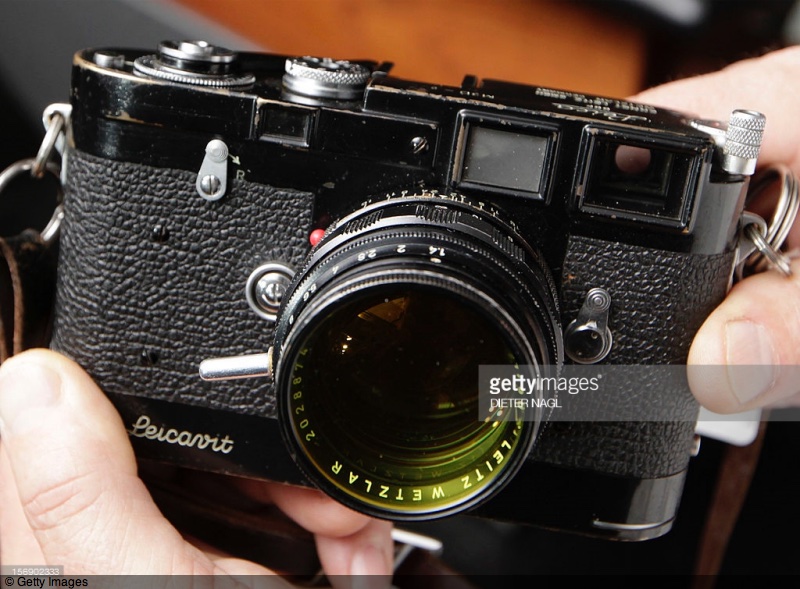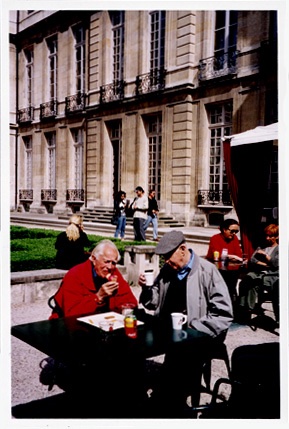A great photographer passes.
The New York Times published a fine obituary of David Douglas Duncan who died yesterday at the great age of 102.

Click the image to go to the obituary.
Duncan was famous for two things. His coverage of the Korean War (still unresolved after almost 70 years of American bungling) and his documentation of Picasso. Duncan chose culture over commerce, moving to the south France in 1962. Every day makes me increasingly think I should emulate his decision.
Duncan was renowned as a Leica photographer. In the image above he has a 400mm f/6.8 Telyt mounted on a Leicaflex SL. Leitz honored his Korean work with four special Leica M3 bodies, numbered M3D-1 through -4, fitting each with a custom adapted baseplate rapid winder which subsequently became a standard part which would fit any later Leica M2 without modification, becoming the Leicavit. Duncan’s M3D bodies sell at auction for over $1 million and you can bet they are confined to rotting in some jerk collector’s china cabinet.

One of Duncan’s M3D cameras.
Interestingly, while Leica dominated the reportage marketplace in the 1960s, Duncan unwittingly sealed their fate by adapting early Nikkors from Nikon to his M3 bodies, they were that good. These were made in a rangefinder mount for Nikon’s S series of excellent rangefinder cameras (the Leica M’s finder was far better, however) and once Nikon grafted on a prism and added a flapping mirror the Nikon F was born in 1962 and the Leica was toast, now sold to hedge fund managers and anti-talents like the Kardashians.
The Nikon F was tougher, there was no complex rangefinder to go out of alignment, you did not need viewfinders for anything shorter than 35mm or longer than 135mm and the lenses were as good or better than the contemporary Summicrons, Elmarits and Super Angulons from Wetzlar. I mostly use Nikkors of that vintage on modern Nikon Dx bodies and can attest to their wonderful optical and mechanical qualities. David Duncan had a great deal to do with Nikon’s (and Canon’s, for he also grafted their lenses onto his Leicas) success. The ensuing competition between the two great Japanese marques continues to this day, and all photographers benefit from it and from Duncan’s experimentation.
The University of Texas houses his archive and you can see more here.

Duncan with HC-B at the Picasso
Museum in Paris, May 25, 2000.